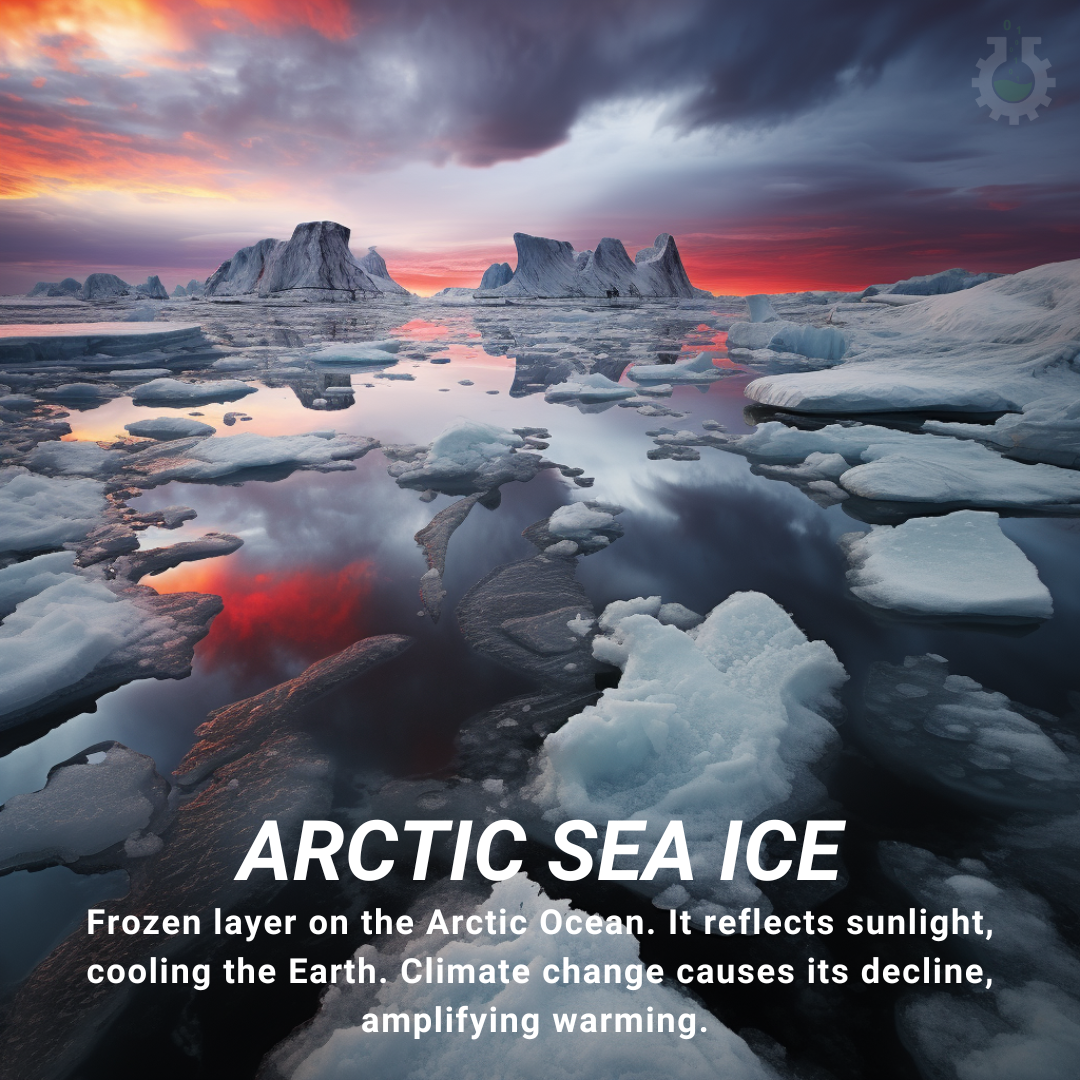September 25, 2023
Climate Change Poster Collection of the Day – Arctic Sea Ice
Book a Demo
Today’s Climate Change Poster Collection focuses on Arctic Sea ice, an integral part of the Arctic Ocean’s ecosystem. It plays a crucial role in providing habitat for various species and influences the distribution of sunlight. The extent and thickness of this sea ice fluctuate with the seasons, often reducing to half its winter size during the summer months. This seasonal change in the Arctic landscape is a vital aspect of the region’s biodiversity and climate.
Interestingly, a significant portion of the Arctic’s total ice cover is multiyear ice. This form of ice is thicker and rougher than first-year ice, making it a unique feature of the Arctic landscape. The density and durability of multiyear ice contribute to its importance in the Arctic ecosystem, offering a sturdy habitat for various species.
The Arctic’s sea ice, however, is not just a regional concern. Its shrinking size is a global issue, as it heavily affects the global climate system. The diminishing sea ice in the Arctic could potentially exacerbate global warming, making it a matter of international urgency.
This issue was underscored when the Arctic sea ice reached its annual maximum extent on March 21, 2021. This followed a period of rapid ice growth beginning in late February. Yet, despite this growth, the extent of Arctic sea ice in March 2021 was the seventh lowest recorded by satellites. With an average of 14.77 million square kilometers (5.70 million square miles), this indicates a significant decrease in sea ice.
In fact, for the third consecutive year, sea ice extent in the Bering Sea was below average. This contrasts sharply with the Sea of Okhotsk, which saw record-high sea ice levels. These contrasting trends highlight the complexity of the issue, showing that while some areas experience gains, others are seeing significant losses.
Overall, a trend of decreasing annual maximum extent of the Arctic sea ice has been observed. The decrease rate is about 2.8% per decade, a figure that underlines the urgency of addressing this issue. This crucial component of our global climate system is slowly shrinking, prompting the need for immediate action to mitigate further loss and the potential impact on global warming.
Discover an inspiring collection of climate change posters.



